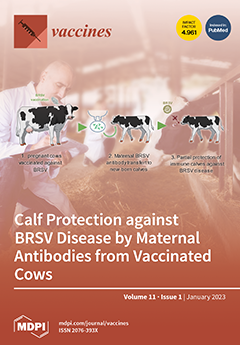Open AccessArticle
Level of Knowledge Regarding Mpox among Peruvian Physicians during the 2022 Outbreak: A Cross-Sectional Study
by
Jose A. Gonzales-Zamora, David R. Soriano-Moreno, Anderson N. Soriano-Moreno, Linda Ponce-Rosas, Lucero Sangster-Carrasco, Abraham De-Los-Rios-Pinto, Raysa M. Benito-Vargas, Valentina Murrieta-Ruiz, Noelia Morocho-Alburqueque, Brenda Caira-Chuquineyra, Daniel Fernandez-Guzman, Fabricio Ccami-Bernal, Carlos Quispe-Vicuña, Mariano Alarcon-Parra, Antony Pinedo-Soria and Jorge Alave
Cited by 17 | Viewed by 4560
Abstract
Introduction: Due to the high incidence of mpox in Peru and the poor knowledge about this disease among healthcare workers in non-endemic countries, it is crucial to determine the knowledge status of Peruvian physicians. Methodology: We conducted an analytical cross-sectional study based on
[...] Read more.
Introduction: Due to the high incidence of mpox in Peru and the poor knowledge about this disease among healthcare workers in non-endemic countries, it is crucial to determine the knowledge status of Peruvian physicians. Methodology: We conducted an analytical cross-sectional study based on an online survey from August to September 2022. Physicians who had a medical license and lived and practiced medicine in Peru were included. To evaluate the factors associated with a higher level of knowledge, we used crude (cPR) and adjusted (aPR) prevalence ratios with 95% confidence intervals (95% CI) using Poisson regression. Results: We included 463 physicians. The mean age was 36.6 (SD: 10.3) years, and most were male (58.1%). Regarding knowledge, the median knowledge score was 14 [IQR: 13 to 15] out of 17 points. In terms of knowledge gaps, only 60.7% of the participants knew that there was an FDA-approved vaccine for mpox, 49.0% of participants knew about mpox proctitis and 33.3% acknowledged that it could be transmitted by the bite of an infected rodent. We found that taking care of patients with mpox (aPR: 1.39; 95% CI: 1.13 to 1.72) was associated with higher knowledge (>p50), while living in the eastern macro-region (aPR: 0.62; 95% CI: 0.42 to 0.93) was associated with lower knowledge (≤p50). Conclusions: Our study showed a high level of knowledge about mpox among Peruvian physicians. However, educational campaigns may be necessary, especially for physicians from the eastern region and those who do not have clinical experience with mpox.
Full article
►▼
Show Figures






